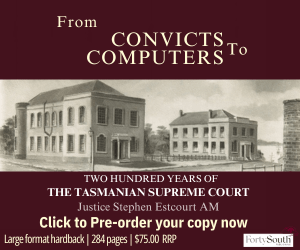In State of Queensland v The Estate of Jennifer Masson [2020] HCA 28 (13 August 2020) (Masson) the High Court restated the common law standard of care to be applied in determining negligence.
The facts in Masson are tragic. In July 2002, the then 25-year-old Ms Masson, had a severe asthma attack. The ambulance was called. At the scene of her attack Ms Masson was treated by ambulance officers including Mr Peters, an intensive care paramedic.
Paramedics were provided with a Queensland Ambulance Service Clinical Practice Manual (CPM). The CPM listed the pre-hospital treatment options for asthmatics depending on the severity of the attack. For asthmatics experiencing “severe asthma”, the CPM stated that salbutamol should be considered. For asthmatics experiencing an even more acute attack and at risk of an “imminent arrest”, the CPM stated that adrenaline should be considered.
Mr Peters initially decided to administer salbutamol and Ms Masson’s condition appeared to improve. But, during transport to hospital, Ms Masson’s condition deteriorated, and Mr Peters assessed a cardiac arrest as being imminent. Mr Peter then administered adrenaline. Ms Masson survived but suffered sustained, severe, irreversible brain damage due to oxygen deprivation. She lived in a vegetative state until her death in 2016.
There were two key issues in dispute in the proceeding. The first issue was whether Mr Peters had made a clinical decision to administer salbutamol or whether he had misread the CPM. If Mr Peters had made a clinical decision, the second issue was whether it was an appropriate decision for Mr Peters to have made.
At first instance, the trial judge favoured Mr Peters’ oral evidence at trial, over a 2009 witness statement, in concluding that Mr Peters had made a clinical decision to administer salbutamol. The trial judge was satisfied that Mr Peters chose salbutamol because Ms Masson had presented with a high heart rate and high blood pressure and Mr Peters was concerned that, in these circumstances, adrenaline might be harmful.
The trial judge also considered that this decision was a reasonable response for an ambulance officer for two reasons. First, the decision was not contrary to the CPM because the trial judge considered that the guidelines contained in the CPM were designed to be flexible. Second, the decision was supported by a minority, credible body of medical practitioners who regarded salbutamol as equally preferable to administer as adrenaline.
Ms Masson’s estate successfully appealed to th e Court of Appeal of the Supreme Court of Queensland.
The Court of Appeal favoured the 2009 witness statement over Mr Peters evidence at trial which, the court observed, was an account given closer to the event. The Court of Appeal considered that the 2009 witness statement suggested that Mr Peters had misunderstood the CPM; that he had mistakenly believed that he could not administer adrenaline to an asthmatic who did not have a slower than normal heart rate. The Full Court also considered that, even if Mr Peters had not been mistaken, he failed in his standard of care by departing from the CPM.
The High Court, in two sets of reasons, unanimously allowed the state’s appeal and overturned the Full Federal Court’s decision.
In their reasons, Kiefel CJ and Bell and Keane JJ held that it was open to the trial judge to prefer Mr Peters’ oral evidence. Their Honours noted that the 2009 witness statement was not a contemporary account and “bore the hallmarks of professional drafting”.
Their Honours stated that the standard of care to be expected of Mr Peters was “that of the ordinary skilled intensive care paramedic operating in the field in circumstances of urgency”
Their Honours agreed with the trial judge in concluding that Mr Peters clinical judgment was “neither contrary to compelling inferences nor glaringly improbable”. And their Honours joined in the trial judge’s observations of the CPM, finding that the CPM guided rather than proscribed clinical decision-making.
In a separate set of reasons, Nettle and Gordon JJ reached the same conclusion as their fellow judges. Their Honours considered that the oral evidence of Mr Peters, and the trial judge’s impression of it, was of “paramount importance”.
Their Honours noted that basing decisions on lay witness statements was “highly problematic” since the “unspoken reality (is) that lay witness statements are liable to be workshopped, amended and settled by lawyers”.
As to the standard of care, their Honours, citing Rogers v Whitaker (1992) 175 CLR 479, observed that the applicable standard for a person possessing a special skill is that of “the ordinary skilled person exercising and professing to have that skill”.
Their Honours noted that it is for the courts to determine this standard but that a body of professional opinion may be influential in that determination. And that body of opinion need not align to a majority opinion.
Dr Michelle Sharpe is a Victorian barrister practising in general commercial, disciplinary and regulatory law, ph 03 9225 8722, email msharpe@vicbar.com.au. The full version of these judgments can be found at austlii.edu.au.














Share this article